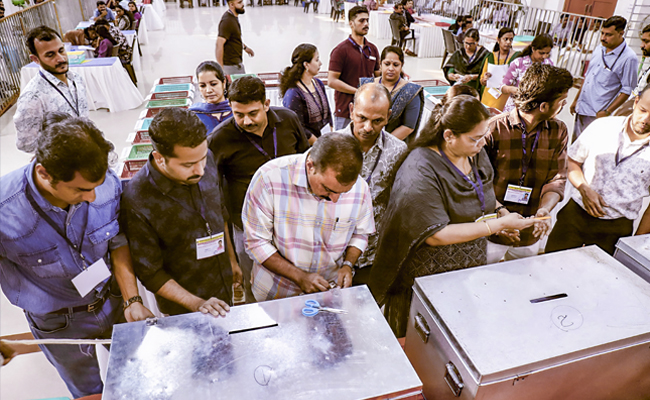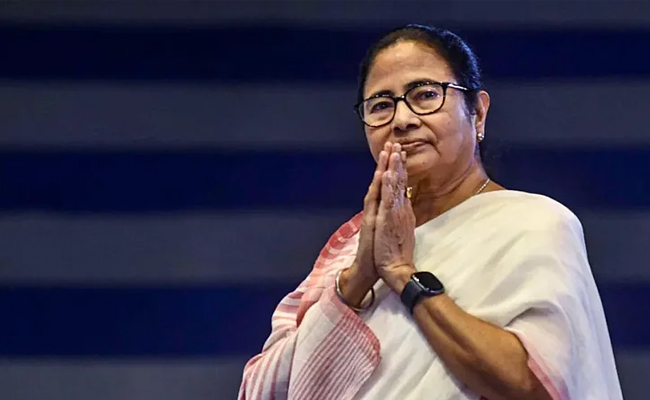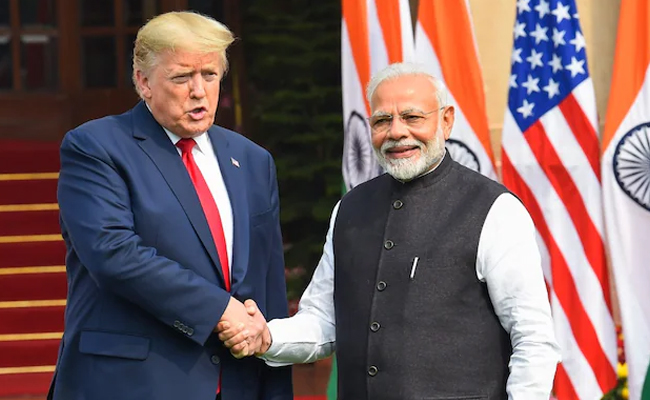This is not the first time that hunger has become newsworthy in India. In post-independent India, though all governments launched a war against hunger, each time hunger won the war. Right from Indira Gandhi’s ‘Garibi Hatao’ to Vajpayee’s ‘Roti Aur Kapda’, political parties have used the promise of hunger eradication for electoral gains. Realizing that it is difficult to mobilize votes around the issue of hunger, the BJP used other emotional issues to reap electoral gains. With political parties understanding that it is easy to win elections by spreading hate instead of distributing food, ‘hunger’ moved to the bottom of the list of priorities of manifestos of political parties. With those claiming to have distributed food to the poor at low prices losing elections and those citing ‘Ram Mandir, Pakistan, Patel statue’ winning elections, governments progressively started reducing funds allocated to the poor.
As a result, the world’s tallest statue has raised its head in the country. Speedy projects are being planned for bullet trains. The foundation stone has been laid to build the Ram Mandir. Preparations are now on to bring to the forefront the controversy around the Krishna temple. All this is being done using the media to make people believe that the country is moving towards becoming a world leader. At the same time, India has performed poorly in the Global Hunger Index (GHI). Last year if India was ranked 102nd in the GHI, this year it has improved its position to the 94th rank. Ironically, neighboring Pakistan is in the 88nd rank. The increase in the number of the hungry people in India has surpassed that in Pakistan. The report has also shown that India’s performance is worse than Bangladesh’s. During the UPA administration, malnutrition rates in India had crossed 45 per cent. Now, under the leadership of Prime Minister Narendra Modi, hunger continues its unstoppable victory march.
The moment India’s poor performance in GHI was announced, several experts started criticizing the government’s neglect towards malnutrition. And as usual, the government is blaming ‘Coronavirus’ for its failures. But the truth is beyond that. For the last ten years, all government programmes have focused on the rich. With the belief that the prosperity of the corporate sector translates to the prosperity of the country, the government has forgotten that the poor are part of the country’s development. This government has adopted global attention and investments in mega projects as its development criterion. The massive Patel statue and bullet train projects are a part of this agenda to attract global attention. Demonetization, GST, and lockdown have weakened the foundation of the Indian economy. The government’s wrong decisions destroyed rural industries, medium sized industries, and the retail economy. Digitization and Aaadhar card deprived the poor of the welfare benefits provided by the government and it became impossible for some of them even to avail themselves of the Public Distribution System (PDS) food grains. The stories of those who died having been deprived of rationed food as they had no Aadhar card were splashed on the front pages of newspapers. With a faulty and inefficient PDS, the government’s new rules directly affected the poor.
Now, the government is citing the excuse of ‘Coronavirus’ for everything. The government is hiding the fact that hunger has been drastically increasing right from the days of demonetization. Natural calamities and epidemics are not new to the world. If the country had cared for its poor, designed the PDS efficiently, prioritized eradication of hunger, the nation need not have feared the Coronavirus. Even when the country was in a state of shock due to the hunger caused by the lockdown, the food grains in godowns were diverted for the purpose of producing sanitizers instead of reducing hunger. Experts have warned that hunger can trigger other diseases even if the Coronavirus disappears from our midst.
Doctors have already said that the Coronavirus is a disease that can spread to others quickly but it is not a deadly virus. If tuberculosis and Coronavirus diseases are compared, a country like India must fear tuberculosis more. The World Health Organization (WHO) said on Wednesday that the Coronavirus can destroy the country’s progress in the eradication of tuberculosis in the country. The WHO has expressed anguish that countries like India and South Africa that are most impacted by tuberculosis are diverting the funds allocated for tuberculosis for its battle against the Coronavirus. Even if Coronavirus ceases to exist, India’s health problems will not end. In the future, tuberculosis could become a huge problem due to two reasons. One, with the funds allocated for tuberculosis getting diverted to other services, accessing medicines and treatment would become increasingly difficult for those with tuberculosis. Two, with malnutrition the most important contributing factor for tuberculosis, increasing hunger could aggravate the problem of tuberculosis.
In such a situation, the government should change its dual stand with regard to the consumption of beef that has the benefit of offering maximum proteins. People affected due to the lack of food and suffering hunger pangs should have easy access to beef. The rest can be exported. The government’s acceptance of the consumption of beef as an integral part of the food system can lead to the reduction in malnutrition. The criterion for the identification of the poor should change. Comprehensive changes should be made in the distribution of food grains to make sure that food grains reach eligible families instead of letting them rot and consumed by worms in depots. The government should immediately understand that diseases can be won by winning over hunger. Otherwise, forget becoming a world leader, India might become a problem to the world due to the continued spread of diseases such as tuberculosis.
Let the Truth be known. If you read VB and like VB, please be a VB Supporter and Help us deliver the Truth to one and all.
Thiruvananthapuram (PTI): Buoyed by the strong performance of the Congress-led UDF in the local body polls, KPCC president Sunny Joseph said on Saturday that the front's results indicated the people had rejected the LDF government.
According to early trends, the UDF was leading in more grama panchayats, block panchayats, municipalities and corporations than the LDF.
The local body polls were held in two phases in the state earlier this week.
ALSO READ: Cong candidate who moved Kerala HC for name reinstatement in voter list, wins
Speaking to reporters here, Joseph said the people of Kerala had extended their support to the UDF.
"We could expose the LDF government’s anti-people stance and the people understood it. The LDF’s fake propaganda was rejected by the people. The UDF is moving towards a historic victory," he said.
He said a united effort, proper preparations, good candidate selection and hard work had resulted in the Congress and the UDF’s victory in the elections.
Asked about the prospects in the Thiruvananthapuram Corporation, Joseph said the party was studying the matter and would comment later.
LDF convenor T P Ramakrishnan said the results would be closely examined.
According to him, the government had done everything possible for the people.
"Why such a verdict happened will be examined at the micro level. People’s opinion will be considered and further steps will be taken," he said.
He added that decisions would be taken after analysing the results. "If any corrective measures are required, we will initiate them and move forward," he said.
AICC leader K C Venugopal said the results showed that people had begun ousting those who, he alleged, were responsible for the loss of gold at Lord Ayyappa’s temple.
"This trend will continue in the Assembly elections as well. It is an indication that the people are ready to bring down the LDF government," he said.
Venugopal said the UDF had registered victories even in CPI(M) and LDF strongholds.
"I congratulate all UDF workers for their hard work. Congress workers and leaders worked unitedly," he said.
Referring to remarks made by Chief Minister Pinarayi Vijayan against the Congress on polling day, Venugopal said the voters had responded through the verdict.
"I do not know whether the chief minister understands that the people are against him. Otherwise, he does not know the sentiment of the people. The state government cannot move an inch further," he said.
He said the results indicated a strong comeback for the UDF in Kerala.
Asked whether the Sabarimala gold loss issue had affected the LDF in the local polls, Venugopal said the CM and the CPI(M) state secretary did not take the issue seriously.
"We took a strong stand on the matter. The BJP played a foul game in it," he alleged.
On the BJP's role in the local body elections, Venugopal alleged that the party operated with the CPI(M) 's tacit support.
"The CPI(M) supported the central government on issues such as PM-SHRI, labour codes and corruption in national highway construction. The CPI(M) is facing ideological decline, and the state government’s policies are against the party’s own decisions," he said.
Meanwhile, LDF ally Kerala Congress (M) leader Jose K Mani said the party could not win all the wards it had expected in the elections.
He congratulated winners from all parties and said the party would closely examine the losses and identify shortcomings. "Later, we will take corrective measures," he added.
Senior Congress leader and MP Rajmohan Unnithan said the trends in the local body elections indicated that the UDF would return to power in the 2026 Assembly elections.
"We will win 111 seats as in 1977 and return to power in 2026. The anti-government sentiment of the people is reflected in the elections," he said.
Unnithan said the people were disturbed and unhappy with the present government.
"The trend indicates the end of the LDF government," he added.
CPI(M) MLA M M Mani said the people had shown ingratitude towards the LDF despite benefiting from welfare schemes.
"After receiving all welfare schemes and living comfortably, people voted against us due to some temporary sentiments. Is that not ingratitude," he asked.
Mani said no such welfare initiatives had taken place in Kerala earlier.
"People are receiving pensions and have enough to eat. Even after getting all this, they voted against us. This is what can be called ingratitude," he said.
Muslim League state president Panakkad Sayyid Sadiq Ali Shihab Thangal said the results were beyond expectations.
"The outcome points towards the Secretariat in Thiruvananthapuram, indicating that a change of government is imminent. We are going to win the Assembly election," he said.





